News officially released on 20 September 2017 by Salt Lake City based Church of Jesus Christ of Latter-Day Saints confirmed that the LDS Church had paid the record sum of $35 million dollars to the Community of Christ church of Independence, Missouri - for the Book of Mormon second generation copy - a facsimile of the lost original claimed to have contained the actual signatures of the "Three Witnesses" and the "Eight Witnesses."
The manuscript was used by printer E. B. Grandin to produce 5,000 copies of the Mormon bible. This copy work was reproduced from the original manuscript that Prophet Joseph Smith is said to have transmitted "by the will of God" to the Mormon scribes. These same scribes also bore witness in writing and each affixed each of their unique signatures to this crucial page as a sworn affidavit bearing multiple claims to have seen the Gold Plates Prophet Smith in New York State and then brought to Harmony, Pennsylvania from New York State: The Gold Plates being what the Book of Mormon, published in 1830, was wholly based on.
One of the primary scribes to the now deemed 'lost' Harmony manuscript included Mormon Church co-founder John Whitmer: one of the "Eight Wtinesses."
Whitmer's hand written Book of Mormon Testimony, recently discovered, is the only extant viable direct link between the Book of Mormon and the fabled Gold Plates of Nephi given originally to Prophet Smith in Manchester, New York by Angel Moroni in 1827 at Hill Cumorah.
The original Harmony draft is referred to as being 'lost' because in 1841 Joseph Smith had placed the original manuscript behind a cornerstone of the Nauvoo House, a boarding house in Nauvoo, Illinois. Years after Smith's murder in 1844, when efforts were made to retrieve the manuscript during the demolition of the Nauvoo House in 1882, it was discovered that water had seeped behind the cornerstone and horribly damaged the original manuscript with mold and destroyed much of its original sacred passages. Only about 28% of the manuscript, consisting of fragments and badly faded copy, remained.
Most significantly, the original signature page of the 'Nauvoo House' original "Gold Plates" manuscript comprising the actual Testimony to the Gold Plates - signed by each of the "Three Witnesses" and the "Eight Witnesses - a total of eleven signatures supporting each of the eleven's sworn testimony - was found completely destroyed!
Yes, the basic key to the entire Book of Mormon no longer exists in the physical realm on this heavenly Earth! It has been gone for over 150 years!!
And too, back in the mid-1800's, Louis Bidemon, the man who had married Joseph Smith's widow Emma, had taken possession of the remaining original manuscript after it was retrieved from the Nauvoo House cornerstone. Over the ensuing years, Bidemon would give away pages and loose fragments to visiting Mormon missionaries.
On 31 August 2017. the LDS Church announced that the Church's History Department had taken possession of the fragments of the Nauvoo House 'Gold Plates' original from the Community of Christ church; an effort which took place piece meal over a period of two months. No discussion of the price paid had been discussed in the LDS Church news release.
The letter testimony by John Whitmer on his attestment found in the Book of Mormon as one of the "Eight Witnesses," that the Mormon co-founder executed on 6 May 1877, was written in response to an inquiry by an elder in the then newly chartered Reorganized Church of Jesus Christ of Latter-Day Saints that had been formerly founded in Missouri in 1872.
The John Whitmer Book of Mormon Testimony was addressed to RLDS church elder Joseph R. Lambert. MormonKey.com will be examining Joseph R. Lambert in part and in greater detail with discussions that will come to be published over the coming months and for sometime into the future.
The John Whitmer Book of Mormon Testimony was found near the turn into the Twenty-first century - carefully glued into a single little thick hardcover cloth and leather covered manuscript journal with the words "Scrap - Book" stamped onto its spine. When found, the journal's ultimate manifestation entering the physical realm just 125 years after being created, presented itself as nothing short of a complete engima: a total unexplainable mystery.
A complete examination of the Journal contents thus ensued. Immediately noticed page after page was the very cryptic looking somewhat hieroglyphic handwritten text. These writings sometimes were found in short notation form next to standard English printed clippings from Mormon publications or even select page segments that appeared to actually be from the Book of Mormon bible itself.
Other pages were solely executed in this odd form of writing, with no clippings found on a respective page. Then other separate sheets of letter paper were found tucked into the journal as well, with this same form of writing. One sheet included both standard English writing and its corresponding equivalent in the cryptic form of writing found through-out the journal.
Initially and for sometime after the "Scrap - Book" journal was found, it was thought that this cryptic looking writing was some form of "Characters" like that embodied with what had come to be known as the "Anthon Transcript," or "Reformed Egyptian" writing. Eventually this notion was completely ruled out; continuing the enigma surrounding the mysterious "Scrap - Book" journal.
However, over time, a series of curious events eventually led to channels of opportunity guided by what some would consider to be led by divine providence; events that ultimately provided for the final discovery of exactly what the cryptic form of
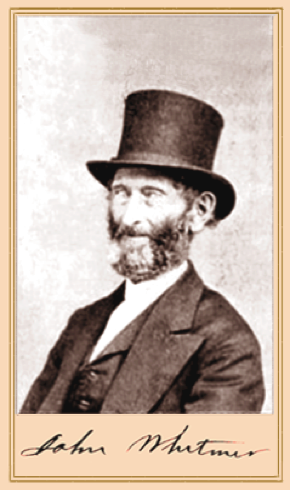
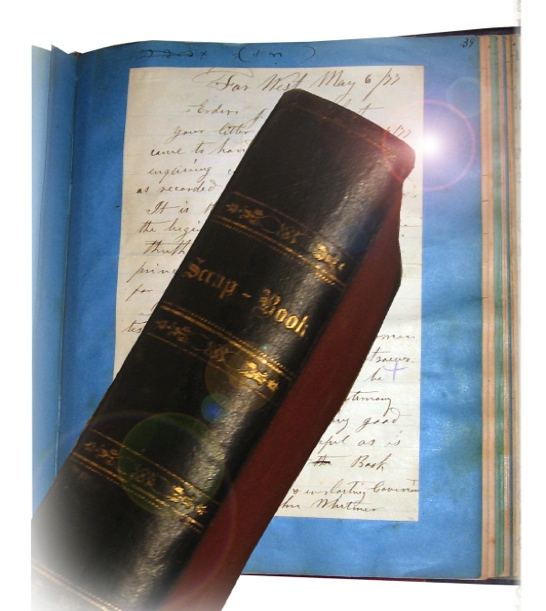
(Courtesy: Private Collection)
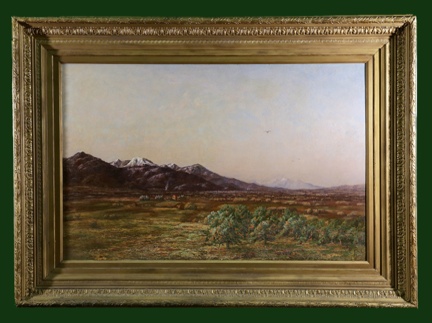
(Courtesy: Private Collection)
EARLIEST LARGEST EXTANT SALT LAKE CITY, UTAH TERRITORY OIL PAINTING ON CANVAS DISCOVERED! AMAZING DEPICTION OF EARLY MORMON SETTLEMENT!
A massive circa 1860-1870 oil painting on canvas measuring 34 1/8" x 54 1/8" in size, unsigned as to artist, was recently found and identified as being that of Salt Lake City, Utah Territory.
At the outset of the discovery of what appears to be the earliest largest extant painting of Salt Lake City extant, it was uncertain as to whether the mountains depicted behind the bourgeoning
city shown in the oil on canvas was definitively that of the Wasatch Mountains, Uintah Range looking east, or that of the Oquirrh Mountain range looking west. Working with the Brigham Young Museum of Art, who supplied detailed images for reproduction of paintings by the famed artist Albert Bierstadt showing in one the Wasatch Mountains, Uintah Range and one of the Oquirrh Mountain range - a dramatic conclusion came about utilizing the principles of paleographic comparative analysis. This process is shown herein to all, as the MormonKey.com takes one through all steps utilizing the paleographic process.
Also, use of rare original 1860's to 1880's original albumen photographs of specific scenes taken at Salt Lake City, Utah Territory are also provided, to assist those accessing MormonKey.com in furthering the processes of authentication and assessment of the large unsigned recently discovered Salt Lake City oil on canvas painting, but to also to provide more clarity concerning the life and times in the times of early Mormon settlement in Utah territory.
Detailed photographs of the large unsigned oil painting are also revealed here at MormonKey.com for further detailed study.
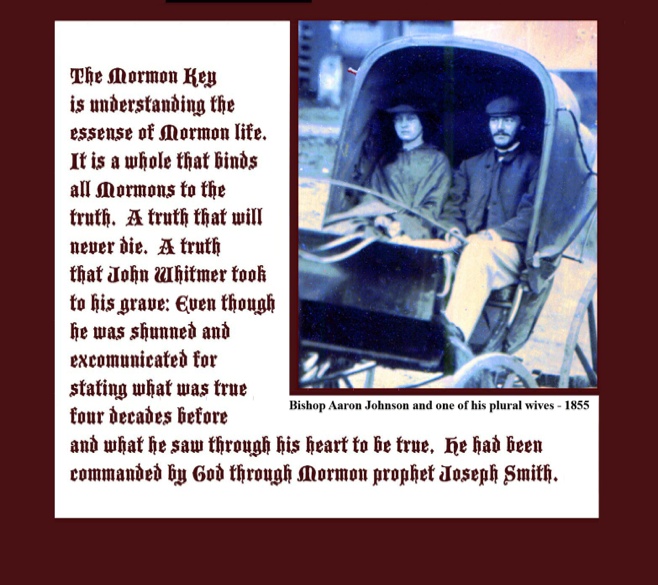
The Hill Cumorah at Palmyra, New York is where the story of the "Book of Mormon"
begins it's sacred emergence.
The Gold Plates of Nephi had been buried at the Hill Cumorah in North America ever since AD 421, which was some years following the final battle between the Nephites and the Lamanites.

A Great American Folk Story
Dorothy Webb Roberts, born in Billington, North England, United Kingdom in 1927, led a sterling career travelling to all parts of the world as a professional practioner in and educator of the art of stenographic shorthand. Ms. Roberts in time became expert in all comprehensive phases of Pitman's shorthand. This occured once she had developed a basic foundation in general secretarial skills at the young age of thirteen when she was suddenly propelled into the craft at the onset of her native country Great Britain's 1940 entrance into World War II.
Working first in the United Kingdom and then in such diverse areas of the world including Africa, Australia - often working in official capacity for English government offices in service to the Queen, as well as working in various high level capacities in the United States, Dorothy Webb Roberts wore all hats when it came to running offices and organizing secretarial details either for just herself or at overseeing a office staff of many.
Although Dororthy Webb Roberts had long ago become proficient in the art of "Standard Pitman's Shorthand" stenography, it however would not be until the year 1995, when she was sixty-eight years of age, that she came to finally methodically "crack the code" of the century old lost art of "Early Pitman's Shorthand."
This event occurred at the time when Dorothy Webb Roberts resided in Greeley, Colorado USA after a party contacted her about some old family diaries dating to 1863 and 1864.
The diaries had been kept by a soldier from Vermont who fought during the American Civil War and had handed down the diaries executed in "Early Pitman's Shorthand." This particular shorthand method was officially discontinued in 1873 by practitioner Benn Pitman, the brother of Isaac Pitman - that latter who invented the process in 1837 back in England.
Dorothy Webb Roberts 1995 effort at transcribing the Civil War diaries historically became the first successful effort of any such kind in the Twentieth Century modern times.
It would then be in 2006, nine years later - that Dororthy Webb Roberts would become the first person ever to unlock the secrets of a Mormon based work executed in the lost "Early Pitman's Shorthand" art.
In 2006, at the age of seventy-seven years, for Dorothy Roberts - this landmark effort would be marked too with yet another added noble distinction. That distinctive scholarly effort comes as being complimented by the Whitmer companion masterwork Book of Mormon Testimony. This writing by John Whitmer is the only true extant fully hand written Testimony in all of Mormonism. The Book of Mormon testimony by Mormon church co-founder and "Eight Witnesses" John Whitmer, dated 6 May 1877 .........., is all that is left.
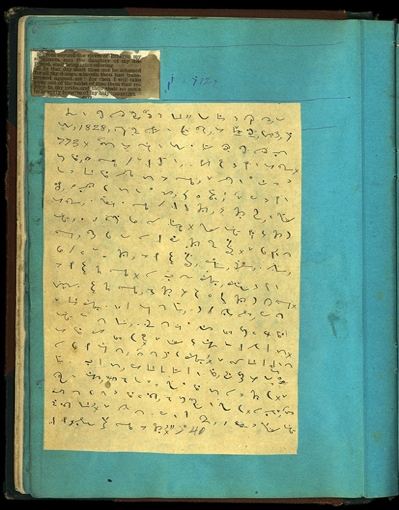
BB
WHAT ARE THE REAL RAMIFICATIONS
OF THE $35 MILLION PAID BY THE LDS CHURCH FOR THE "PRINTER'S COPY" OF THE
BOOK OF MORMON?
THE LOST
JOHN WHITMER 6 MAY 1877
ONLY LINK LEFT TO
"BOOK OF MORMON"
HANDWRITTEN LETTER OF
TESTIMONY FOUND!
ENGLISH BORN PHONOGRAPHY EXPERT BECOMES WORLD'S FIRST EVER TO TRANSCRIBE CENTURY OLD LOST CODE TO "EARLY PITMAN'S SHORTHAND" TEXT IN 1995 AND EXECUTED FIRST "EARLY PITMAN'S SHORTHAND" MORMON CODE TRANSCRIPTION IN 2006
The two huge volumes in THE JOSEPH SMITH PAPERS series entitled: REVELATIONS AND TRANSLATIONS. Published in 2015 by the LDS Mormon Church History Library under the auspice of head Project Editor Robin Jensen and Church History Library Director A. Keith Erekson, this effort reproduced the second generation printer's manuscript used to print the landmark 1830 Book of Mormon
The 6 May 1877 dated John Whitmer signed handwritten letter testimony to the Book of Mormon bible executed in ink by the Mormon co-founder on paper is the quintessential single most important physical earthly umbilical tie that the entire Mormon faith can ever have to the divine appearance of Angel Moroni and the Gold Plates that the Angel had first presented to the Prophet Joseph at Hill Cumorah in 1823.
The sacred printed Book of Mormon has guided the Mormon faith from the moment it began to rise past the signing of the founding church charter by the small group of faithful on 6 April, 1830. The event took place at the home of Peter Whitmer, Mormon Elder John Whitmer's father - in Fayette, New York.
English playright Edward Bulwer-Lytton's notion that "The pen is mightier than the sword," has, over a span of nearly two centuries, become the quintessential personification illustrating the powerful action that the metonymic phrase most succinctly inculcates. Through its expansive memetic use, the old adage has become, when used in communication, keenly illustrative in revealing the highly administrative power or advocacy of an independent press as a more effective tool than direct violence.
The sentence, if not the idea expressed in varying earlier forms - as far back as the times of Ahiqar in 7th century BC - was coined by Bulwer-Lytton in 1839 for his play Richelieu; Or the Conspiracy. One manuscript copy of the Teachings of Ahiqar, dating to about 500 BC, states that "The word is mightier than the sword."
The Greek playwright Euripides, who died circa 406 BC is supposed to have written: "The tongue is mightier than the blade." Both thie Assyrian and Greek conceptualizations, along with their respective cultural codifications - occurred well over a millennium before the advent of the first movable ceramic type printing presses developed in China just after 1000 AD and later metal type presses of Johannes Gutenberg around 1440.
Variant forms of the phrase as well are
embodied in both the Old and
New Testaments.
True, This! —
Beneath the rule of men entirely great
The pen is mightier than the sword. Behold
The arch-enchanters wand! — itself is
nothing!
— But taking sorcery from the master-hand
To paralyse the Cæsars, and to strike
The loud earth breathless! —
Take away the sword —
States can be saved without it!
Click above to continue....
THE JOHN WHITMER "BOOK OF MORMON" TESTIMONY FOUND HIDDEN IN CRYPTIC 1870'S MORMON MANUSCRIPT JOURNAL - TOGETHER THE TWO SECRETED AWAY FOR OVER A CENTURY - THEN LOST - UNTIL OF LATE DISCOVERED AND MIRACULOUSLY TRANSCRIPTED
BY THE WILL OF GOD!
To some this story of Angel Moroni may appear to be but a fabled notion. On the contrary, believers in the Book of Mormon faith spiritually feel and decidedly believe that all that was found and stated in the Book of Mormon, was, in all simplicity; true. It is this very same truth that both lies within and is codified by the John Whitmer's Book of Mormon testimony letter dated 6 May 1877. The original letter itself was recently discovered after being hidden for over a century and considered lost.
RLDS ABANDONS FULL ADHERENCE TO ORIGINAL 1830 BOOK OF MORMON GOSPEL
IF THE SACRED BIBLE OF A RELIGIOUS INSTITUTION IS BASED WHOLLY ON SACRED SIGNED SWORN TESTIMONY, BUT THAT ORIGINAL SACRED SIGNED SWORN TESTIMONY FROM WHICH ITS BIBLE CAME FROM IS SUDDENLY DESTROYED AND NO LONGER EXISTS - WILL THAT RELIGIOUS INSTITUTION ON WHICH ITS BIBLE IS BASED FUNDIMENTALLY CEASE TO EXIST IN THE EYES OF GOD - WHEN THERE IS NO LONGER ANY VALID FOUNDATION FOR THE RELIGIOUS INSTITUTION TO STAND UPON?
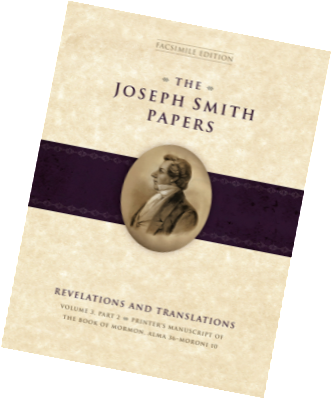
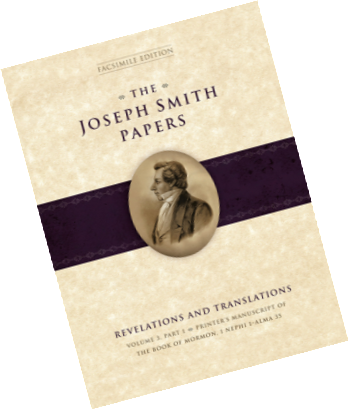
THE LOST
JOHN WHITMER 6 MAY 1877
ONLY LINK LEFT TO
"BOOK OF MORMON"
HANDWRITTEN LETTER OF
TESTIMONY FOUND!
BRIEF HISTORY OF RLDS CHURCH
TODAY THIS WHOLLY
SIGNIFICANT SPECIFIC
KEY PAGE TO THE ENTIRE
BOOK OF MORMON:
NO LONGER EXISTS!
TODAY THIS WHOLLY
SIGNIFICANT SPECIFIC
KEY PAGE TO THE ENTIRE
BOOK OF MORMON:
NO LONGER EXISTS!
THIS DESTRUCTION OF THE SACRED ORIGINAL WITNESSES SIGNED TESTIMONY PAGE BECOMES THE GREATEST LOSS EVER TO THE MORMON CHURCH!
IN 2017 THE LDS CHURCH PAID $35 MILLION TO THE COMMUNITY OF CHRIST CHURCH FOR A MERE 2ND GENERATION COPY OF THE VERY SACRED BUT 'LOST' ORIGINAL 'GOLD PLATES' BOOK OF MORMON TRANSCRIBED MANUSCRIPT
BUT WHAT DID THEY REALLY GET FOR THEIR MONEY?
"We are to gather up all learning and treasure it"
Brigham Young
Published on 5 Dec 2013. the Utah based KUTV2News reported that for the first time in 150 years an LDS history librarian had unlocked the vault of hundreds of lost sermons by early Mormon church leaders that had been transcribed using Benn Pitman's "Early Pitman's Shorthand" method of phonography. Up until this time the LDS church could not find anybody to transcribe the sermons - until now. The report spoke about LaJean Purcell Carruth, a comitted Utah woman who worked for the LDS library since she was 22. Carruth eventually started a study that began 30 years before the year 2013 to master the lost Pitman code. She made recent headway in becoming finally able to decipher the "Early Pitman's Shorthand" manuscripts that the LDS Library holds of 150 year old sermons presented by several revered 19th century Mormon hierarchy of the day. In this video LaJean Purcell Carruth speaks to KUTV2 News reporter Dan Rascon, about unlocking the LDS historical past saved by the Mormon use of "Early Pitman's Shorthand.
LDS HISTORY LIBRARIAN UNLOCKS BENN PITMAN'S "EARLY PITMAN SHORTHAND"
NOTE: DOROTHY WEBB ROBERTS, THE LATE WORLD'S FIRST EXPERT ON "EARLY PITMAN SHORTHAND" DEVELOPED THE SKILLS OF TRANSCRIBING "EARLY PITMAN'S SHORTHAND" AND CONDUCTED THE FIRST SUCH TRANSCRIPTION OF MORMON TEXT (AS FOUND IN THE JOSEPH R. LAMBERT MANUSCRIPT JOURNAL), OVER SIX YEARS PRIOR THAN MORMON LaJEAN PURCELL CARRUTH - DOING SO IN 2007
THE GEORGE D. WATT
"LOST SERMONS"
TRANSCRIPTIONS
The YOUTUBE video stream to
"The Lost Sermons" video removed 1 June 2017 by the LDS Church
TO VIEW, COPY & PASTE IN BROWSER THE FOLLOWING LINK:
https://www.lds.org/media-library/video/2013-03-0100-lost-sermons?lang=eng
This video on "The Lost Sermons" manuscript collection held by the LDS Library published on 15 April 2014 heralds and examines the work of 19th century Mormon George D. Watt who learned "Early Pitman Shorthand" to record the sermons of early Mormon church leaders verbatim.
LDS librarian LaJean Purcell Carruth, who had trained herself in the "Early Pitman's Shorthand" over a span of 30 years, as of 2013, recently started to succesfully transcribe hundreds of sermons which have previously been unavailable to Mormon scholars for over 150 years. This insightful video explores techniques the LDS has lately adopted to open up this previously unaccessable segment of the Mormon experience and record captured and preserved in "Early Pitman's Shorthand" executed manuscript records.
International Pitman's shorthand expert Dorothy Webb Roberts holds the distinction of conducting the earliest transcription ever of a Mormon related manuscript document in modern times. For the record, the fully documented instance took place in the year 2006 with the successful application of "Early Pitman's Shorthand," by Dorothy Roberts when she arduously transcribed the late 19th century circa 1870's Mormon "Scrap - Book" journal attributed to early Missouri based RLDS Elder Joseph R. Lambert. Mormon Carruth claims it took her thirty years to perfect the methodology, while it took world's expert Dorothy Webb Roberts a little over a year to perfect the process. Dororthy Roberts work has been acknowledged by the United States Library of Congress, while Ms. LaJean Purcell Carruth's never was.
The work was first transcribed during the professional engagement of the transcription skills of Dorothy Webb Roberts by MormonKey.com author and publisher Richard Warren Lipack in the year 2006 to transcribe the 1870's "Scrap - Book" Mormon journal in which the Book of Mormon John Whitmer 6 May 1877 handwritten and signed testimony was found and discovered by author Lipack.
LDS CHURCH EMPLOYS USE OF "EARLY PITMAN SHORTHAND" TRANSCRIPTION FOR CHURCH'S FIRST TIME - AS LATE AS 2013
MASTER MORMON HISTORIAN DR. RICHARD LLOYD ANDERSON CODIFIES THE SIGNIFICANCE OF COLLECTED WITNESS TESTIMONY GIVEN BEYOND THE ORIGINAL TESTIMONY PUBLISHED IN 1830 BOOK OF MORMON
The very adept LDS scholar Dr. Richard Lloyd Anderson, author of the book "Investigating The Book of Mormon Witnesses," articulately presents supportive observations on the reliability of the 1830 first issuance of the Book of Mormon printed testimony of both the "Three Witnesses" and the "Eight Witnesses."
The formidable evidence of Testimony found in the printed Book of Mormon, as dissected in depth by Dr. Anderson solidifies what he sees as a basic consistency between all of the Witnesses' later supportive Testimony to the Book of Mormon. The manner with which each saw the gold plates, with even some instances provided by the presence of an angel, and how such specific details were maintained by all eleven Witnesses over the whole course of each one's lives. This is all in despite of some Witnesses meeting early sickness and death and others enduring undue persecution and ridicule during their lifetime over the course of many years.
Even though some Witnesses were excommunicated from the Church, all never denied what they in fact saw. With nothing to lose, and everything to gain by denying what they saw, these men all adhered to their statements and beliefs - because they believed from the depth of their hearts that they truly saw an angel and the gold plates. Dr. Richard Lloyd Anderson gives the most poignant and compelling discussion to date, which too is supported by his book "Investigating The Book of Mormon Witnesses," and also with his compelling “Attempts to Redefine the Experience of the Eight Witnesses” Journal of Book of Mormon Studies published by the Maxwell Institute, Volume 14, Issue 1, pages 18-31, 2005.
MORE INSIGHTS INTO STATEMENTS OF WITNESS TESTIMONY
In a specially made video presentation for the Maxwell Institute produced around 2004 entitled: "Testimonies of the Book of Mormon Witnesses," Dr. Richard Lloyd Anderson provides other ongoing insights into the Witnesses' statements drawn from his exhaustive studies, some of which took him to comb the vast archives of the Community of Christ Church at Independence, Missouri.
The John Whitmer Historical Association (JWHA) is a organization independent of any church within the Mormon religious movement. It is a nonprofit entity promoting study, research, and publishing within the sphere concerning the history and culture of the Latter Day Saint movement. The group which maintains about 400 members is made up of participants from different factions within the Mormon church and also those of other religious backgrounds who are non-Mormons.
Included in the John Whitmer Historical Association is the Independence, Missouri based Community of Christ church: a group spawned from the former Reorganized Church of Jesus Christ of Latter-Day Saints (RLDS) that was founded first in Illinois in 1860 on the original precepts of the founding principles of the Mormon church. This RLDS was guided for 54 years by Joseph Smith III, the son of Mormon founder Joseph Smith, Jr. The group had been finally formally incorporated in Missouri in the early 1870's. The RLDS cum Community of Christ church participants within the John Whitmer Historical Association (JWHA) are also joined in hope and spirit by members of the Church of Jesus Christ of Latter-Day Saints. This is the group that today is approximately 16 million strong who came to first organize and settle in Utah beginning in 1846 - not long after the 1844 murder of Mormon church founder and prophet Joseph Smith in Carthage, Illinois. Besides these main influences, other people interested in the Latter-Day Saint movement - from other walks of life and religions - have come to join in the multi partisan John Whitmer Historical Association.
One of the primary goals of the John Whitmer Historical Associations is the fostering of cooperation with LDS and non-Mormon scholars.
Scholarship in the field of Mormon history had been developing since the 1940's. It was the landmark 1945 work by the UCLA professor Fawn Brodie that penetrated the Mormon mindset with controversy and challenging narratives that came to raise questions, when before there was none. It was the 1945 publication by Brodie's No One Knows My History: The Life of Joseph Smith. And it was this work, like the work of John Whitmer over a century before that caused Fawn Brodie, as well a Mormon, to become excommunicated from the Church. Then there was other works that followed: books by Juanita Brooks, Thomas O'Dea, and Leonard Arrington. Each began to apply academic methods to the Mormon religious historical works that they sought to publish. These thriving efforts gave rise to what is known as the New Mormon History.
Within this spirit, in 1965 a professor at the RLDS-affiliated Graceland College named Robert Flanders published Nauvoo: Kingdom on the Mississippi. The book presented was controversial. It treated Joseph Smith's polygamy. This was in glaring contrast to faith-promoting teachings of the RLDS Church and even brought a backlash from some RLDS members.
Then it was in 1966 that Richard P. Howard, still yet another proponent of the New Mormon History became appointed the RLSD church historian and upset some of the more traditional believers by opening up the church archives and began to delve both enthusiastically and optimistically into even more historical challenges. Dusty old files that had not been looked at for over a half century were pulled out of the closets and cobwebs.
This progressive approach spurred by Richard P. Howard regarding Mormon studies inspired Courage: A Journal of History, Thought and Action. This was scholarly group founded in 1970 by several faculty from Graceland College. The group's interested and work contrasted greatly with the conservative publishing efforts of the RLDS, as the 'Courage' group presented a refreshing new look at old staid RLDS issues and historical problems. The works often diverged from traditional RLDS interpretations and began to stir the pot with a fresh brew of interpretations. The independent journal however closed in 1973, by which time several of its original founding went to start the JWHA.
Concurrently, Mormon historical scholarship was also developing fresh ways of interpretation within the Church of Jesus Christ of Latter-day Saints (LDS Church) down in Utah, with the 1965 founding of the Mormon History Association (MHA).
Most interesting is that amongst the Utah based MHA officers, this group included RLDS historians and scholars.
Richard P. Howard was already the RLDS Church Historian when the JWHA was founded at a gathering in his home in the early 1970's Howard later became president the John Whitmer Historical Association in 1985.
Distances between midwest Missouri's JWHA and the Utah based MHA, despite positive experiences, made participation and work between the two factions difficult due to the distances between the two.
Thus it was on September 18, 1972 that just over a dozen spirited RLDS historians met together in Independence, Missouri,in Richard P. Howard's living room. Here the official historian of the RLDS Church organized the John Whitmer Historical Association. Some of the group meeting in Howard's home had organizational expertise and ties as MHA Utah based officers. Thus, from the beginning, the JWHA had instant comradery and mutual interests between RLDS and LDS factions.
The continuance of the collaboration and warm relations between the two church minded groups finally formally formed a unique bond.
From its very inception the homogeny of the group welcomed within the JWHA board of directors members of the LDS, and also Utah historians from other walks were invited to join.
The first official John Whitmer Historical Association meeting took place in September 1973 and significantly was held in Nauvoo, Illinois. This was the last locale in the Unted States where the Mormons congregated under the auspice of Joseph Smith, Jr. before he was murdered at Carthage, Illinois; before re-settlement in Utah began in 1846.
Thus, as stated prior, the group was founded as an independent organization that was not under any direction of any church. Controversial subjects could be introduced and dealt within the organization and from this central base joint participation from all factions could as become a greater harbor for enlightenment between all - furthering the over-all study and advancement of the gospel. The New Mormon History of understanding first spawned in the 1950's could be now amply investigated and studied in a much wider perspective; all a betterment for discussion furthering lively exploration of Mormon controversies.
Some Mormons more grounded as traditionalists - along with religious leaders in general - warned that this new unbridled approach of the New Mormon History could invariably damage faith at large. They felt that this would occur by engaging in questioning the traditional forms of the Mormon religion along with a more liberal religious approach within the Latter Day Saints founded community and expand upon intellectual freedom in general.
But John Whitmer is remembered for his controversial history of early Mormonism and his dramatic falling out with church leaders. And to think he was "commanded by God" through Joseph Smth as the first Church Historian in 1831.
Justice has finally come to be marked by the mere utterance of John Whitmer's name in that his sincere efforts as the first Mormon historian have led to taking the side of the historian when in conflict with the institution; which is what the John Whitmer Historical Association emboldens.
It was from these humble beginnings that much groundbreaking efforts have led to a wider context of understudying concerning Mormon gospel that has been brought forth over the last fifty or more years and it seems that the John Whitmer Historical Association has been at the core of it all.
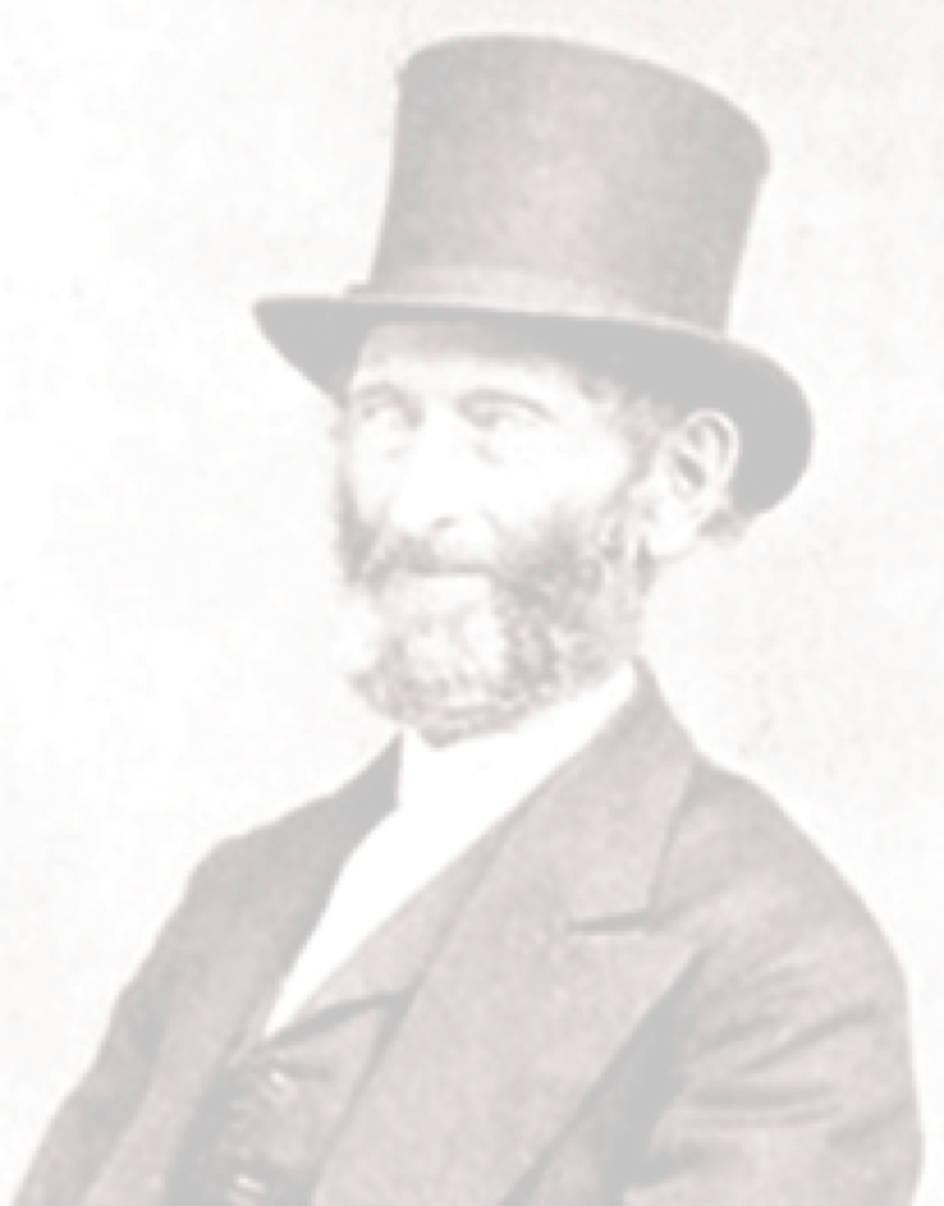
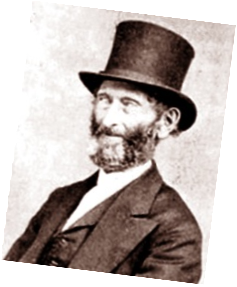
THE JOHN WHITMER
HISTORICAL ASSOCIATON:
FROM THE MOST
HUMBLEST OF BEGINNINGS
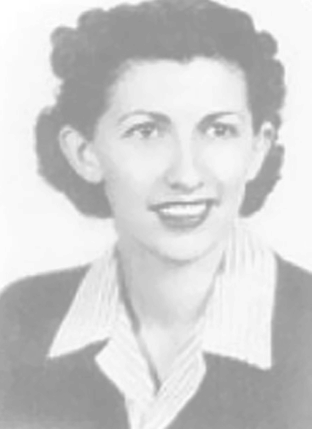
The $35 million dollars is the highest price to date ever paid for a hand written manuscript.
The previous record was $31.8 million dollars paid at auction in 1994 by Microsoft Founder Bill Gates for one of Leonardo da Vinci's more prolific sketchbooks: better known as the Codex Leicester. But with inflation factored into the equation, today, in 2017, conservatively speaking, Codex Leicester would be in the $50 to $60 million dollar range. Thus, the comparison of prices paid between the two is completely mute.
The copy manuscript used by the printer was scanned in high resolution by the LDS History Dept. under guidance of Church History Library Director Keith A. Erekson: duly noted by Richard Warren Lipack at MormonKey.com.
The Community of Christ church that became the recipient of the $35 million dollars was organized originally in 1860. It was created by a Mormon remnant that became formalized in 1872 by charter under the name the Reorganized Church of Jesus Christ of Latter-Day Saints, or RLDS. The group disagreed with the practice of polygamy and "Blood Attonement" as adhered to by those Mormons that followed church leader Brigham Young down to Utah's Salt Lake Valley, beginning in 1846.
The RLDS essentially proclaimed their support of the original precepts found in the foundational gospel presented in the original 1830 Book of Mormon, and not what they viewed as digressions inherent in later editions released by the LDS Church.
By the mid-1990's the RLDS started to soften its embrace of the original Mormon doctrine altogether. In 2001 the RLDS changed their official name to the Community of Christ church and the Independence, Missouri based church as well reorganized formally under a new incorporated charter.
In 2001, church president W. Grant McMurray came to reflect on increasing questions about the Book of Mormon, stating: "The proper use of the Book of Mormon as sacred scripture has been under wide discussion in the 1970's and beyond, in part because of long-standing questions about its historicity and in part because of perceived theological inadequacies, including matters of race and ethnicity."
The cumulative series of changes made within the RLDS cum Community of Christ church increasingly disillusioned many of its church members. In turn financial tithes and supportive donations to keep the religious operation at an even keel eventually dropped by 50%, all while the church directors saw it necessary to expand its missionary work to an array of countries, many of them in primarily underdeveloped locals in Africa.
By 2015, on record, the Community of Christ church supported 60 locations worldwide with a total membership said to be about only, at tops, 250,000 parishioners worldwide.
THE LATEST MORMON KEY
DISCOVERIES
writing found in the "Scrap-Book" journal actually in fact was.
These events came to be the most amazing part of the journey that led to the final step that brought on the full an accurate transcription of the cryptic "Scrap-Book" journal's mysterious contents. This transcription occurred several years following the journal's initial discovery.
Significantly, the window of opportunity for the actual transcription process to actually become executed was found to be open for only a very short period of time. The opportunity clearly would not have availed itself for the Mormon faith unless certain paths of destiny had not crossed each other owing to certain capabilites afforded within man's intrinsic developmental sphere as a whole.
The story of this profound journey and in finality, the actual historic physical transcription of the cryptic contents of the "Scrap-Book" manuscript journal itself will be presented and shall be the primary focus and purpose of MormonKey.com.
To this day, none of the writings found in this archives, whether it be executed in standard English long hand or the mysterious cryptic writings, when later transcribed, were found to contain any any specific identification asserting who the actual author of the contents of the "Scrap-Book" journal actually was, further leading to the enigma that still surrounds this amazing Mormon late 19th century "Scrap-Book."
It is believed however, that the cryptic writings are actually that of RLDS Elder Joseph R. Lambert, which in time, is believed shall come to be shown and revealed.
(Courtesy: Private Collection)
THIS DESTRUCTION OF THE SACRED ORIGINAL WITNESSES SIGNED TESTIMONY PAGE BECOMES THE GREATEST LOSS EVER TO THE MORMON CHURCH!
